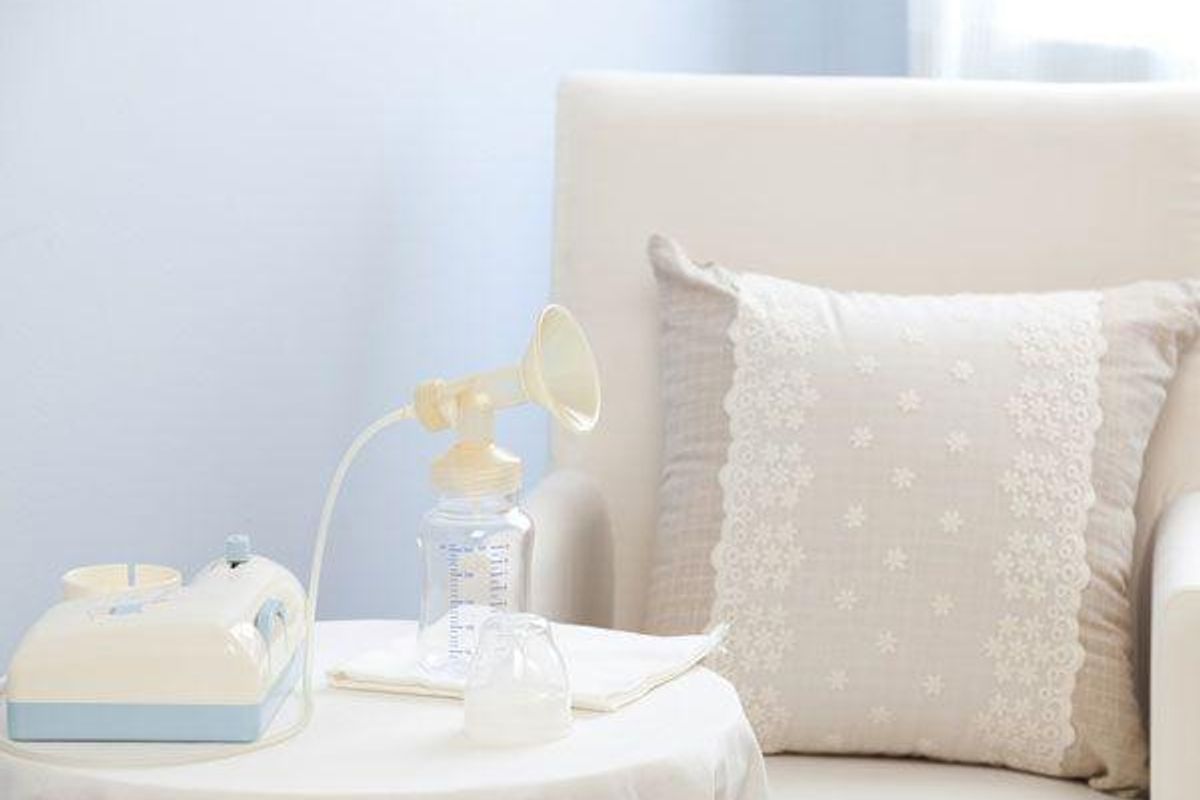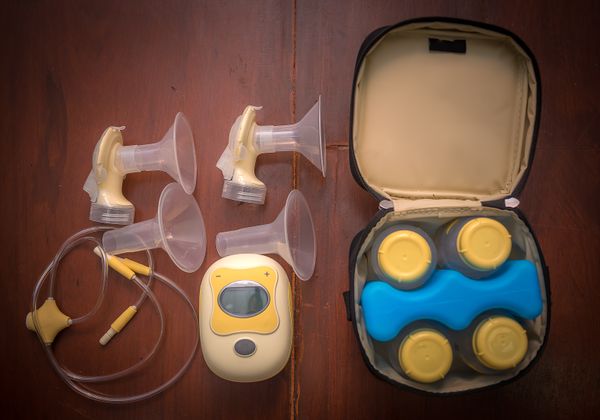Breast pumps are designed to help:
- Provide your baby with the health and nutritional advantages of breast milk while you're away.
- Empty the milk in your breast, which can guard against engorgement, blocked milk ducts and infection.
- Stimulate your milk production.
If possible, you should pump every three hours that you are away from your baby. Make sure to clean the breast pump parts between uses.
Both hand and battery-operated pumps are available. Electric pumps simulate your baby's sucking more effectively and are faster than hand pumps. Many pumps come with discreet carrying cases. The cost ranges from $35 to $350. Not all pumps are created equal. Be sure to research which brands and models provide the best performance, reliability and comfort. Also take into consideration the demands of your daily schedule. Many hospitals and clinics rent breast pumps, so you may want to ask your health care provider or a lactation counselor about these and which models would best fit your needs.
A word about milk storage
- After pumping, refrigerate, freeze or store your milk in a cooler.
- Any container used to store milk should be clean and sterile.
- Glass containers, polypropylene plastic bottles (slightly cloudier, flexible plastic indicated with recycling #5) and storage bags are all good choices.
- Always label and note the date on the storage bag or container.
- Always use oldest dated milk first.
The following are some guidelines for freshly expressed breast milk storage:
- At room temperature (66-72°F) for up to four hours
- In a refrigerator (32-39°F) for five to seven days
- In a cooler with freezer ice packs (59°F) for 24 hours
- In a self-contained freezer unit for three to four months
- In a deep-freezer (0°F) for six to 12 months
- Breast milk should be thawed slowly under warm running water and not in the microwave, which can reduce its nutrition.
- Once the milk has been thawed it should not be refrozen.
New Moms Ask…
What's the best type of breast pump?
Breast pumps today come in all sizes, shapes and forms. Believe it or not, breast pumps are actually considered medical devices and are regulated by the Food and Drug Administration (FDA). They make it possible to pump and freeze your breast milk so that even if you're not available, your milk is.
There are three types of breast pumps: Manual, battery-powered and electric. Some even have attachments you can plug into your car's power outlet. All have three basic parts:
- Breast shield. This cone-shaped cup fits over the nipple and areola.
- Pump. The pump is either attached directly to the breast shield or attached with plastic tubing. It creates the gentle vacuum needed to express the milk.
- The milk container. These are detachable bags or bottles that can store the milk or be attached to a nipple for feeding.
You can buy breast pumps in all major retail outlets and online.







